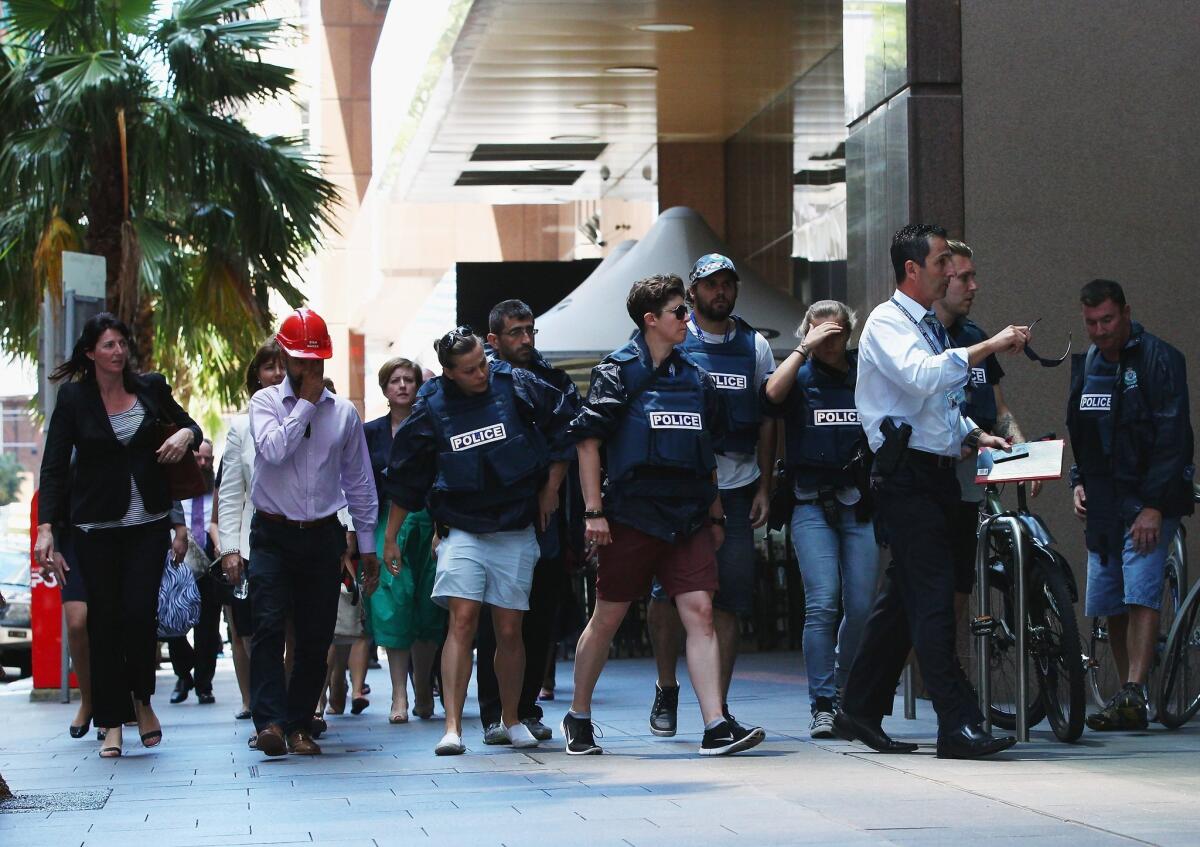Opinion: Uber alles: The cold-hearted capitalism behind ride-sharing

- Share via
Amid the panic and confusion surrounding the recent hostage-taking in Sydney, Uber -- the hipster taxi service that insists it’s not a taxi service -- did the unconscionable: It raised the price of getting a lift out of the danger zone.
But it didn’t just raise the price. Uber’s automatic “surge pricing” model gouged the panic-stricken to the tune of more than $100 ride, a quadrupling of the regular rate. Uber later apologized and offered refunds but its immediate reaction was that the gouging was intentional. There was a sudden need for vehicles and drivers to move people to safety, and by offering drivers an obscene amount of money for a few minutes of driving, Uber cars would flood the zone.
Uber is a fast-growing company seemingly run like a frat house. It also is a function of our growing wealth gap. As Leo Mirani points out at Quartz, it is the economic needs of the poor that give rise to paid services for the wealthy -- same as it has ever been. The “sharing economy” in this sense is really just a modern mechanism for middlemen to insert themselves -- for a fee -- into the market to bring those with disposable income and a desire for a specific service together with the people who decide they are willing to do that work for the price offered.
Tech types love it, as do hipsters, because it “disrupts,” to apply that awful bit of corporate speak, our existing taxi services. It does so by pretending that it is not a taxi service, but a livery service, like limousines and airport shuttles.
What’s the difference? Taxis are defined loosely as rides-for-hire that can be hailed from the sidewalk, and they fall under local taxi commission controls. Livery services are regulated by the state Public Utilities Commission, and cannot stop for a fare who tries to wave them down. The rides must be prearranged.
The new app-based model splits the difference. Ride-share cars aren’t hailed on the streets like a taxi. But you can also summon a taxi by calling a number and giving a dispatcher the address where you want the cab to show up. The ride-share model does the same thing. The PUC last year created a new category for such services: A transportation network company.
Now apply that to real-world circumstances. Imagine you’ve just finished dinner with friends in downtown Los Angeles and you all decide to grab a drink at a bar in Koreatown. You whip out your smartphone, go to the Uber app and within minutes a car shows up and you pay the driver to take you where you want to go. That, according to law as well as common sense, is a taxi service.
And no, it’s not “ride-sharing.” That’s when two people are going to the airport and one gives the other a lift -- for free. There’s nothing shared about summoning a car and driver with just a few minutes’ notice and paying a fare to get driven somewhere. That’s a taxi.
Among the differences between the ride-sharing companies and taxi companies is the regulatory reviews that licensed cabbies -- and the companies they work for -- must undergo. Managers of the upstarts say they do background checks on their drivers, but they seem easy to game. They don’t use fingerprint checks, for instance.
Ultimately, rather than being disruptive, Uber and its sharing economy peers are simply doing end runs around regulatory practices that have been in place for decades, practices designed to protect the public from, yes, price gouging, not to mention from being driven around by people who should not be trusted to perform that task. Taxi rates are established by taxi commissions, offering consumers predictability and protections against the unscrupulous. Surge-pricing, on the other hand, is the free market run amok, and to an offensive level in Sydney.
The right thing to do is reclassify Uber et al as taxi services and bring them under the appropriate, and stricter, local regulatory systems. Short of that, fairness dictates those local regulations be scrapped so the traditional taxi services can compete on a more level playing field.
Follow Scott Martelle on Twitter @smartelle.
More to Read
A cure for the common opinion
Get thought-provoking perspectives with our weekly newsletter.
You may occasionally receive promotional content from the Los Angeles Times.











